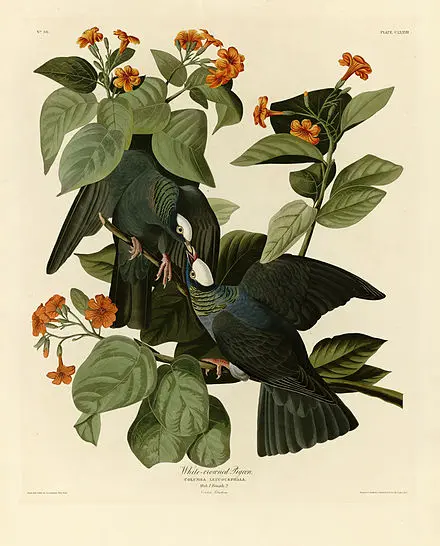Naturalist, ornithologist, and artist John James Audubon first came to Florida in 1831 to capture images of Florida birds for his illustrated book “Birds of America.”
Audubon did not have a pleasurable stay in St. Augustine, complaining in his letters about hard rowing through the salt marshes, difficult wading through mud and water, and fighting sand flies and mosquitoes.
When Audubon returned to Florida in April 1832, he had a much more enjoyable stay in Key West, where he wrote that his “heart swelled with uncontrollable delight” upon his arrival. Audubon was the guest of John H. Geiger, whose home is now called the Audubon House.
“It was built in 1847 to 1849,” said Bob Merritt, director of operations for the Audubon House and Tropical Gardens. “Geiger was brought here by the U.S. Navy to be an assistant in helping with the harbor, get rid of the pirates, draw maps. He was a civilian, but he was known as an excellent ship captain, so the Navy brought him here to try to make sense. He, however, went on to become a wrecker, salvaging ships as they crashed on reef because the wreckers made so much money in Key West, and he could plainly see what a lucrative thing this was to be doing.”
John James Audubon visited Key West and the Dry Tortugas in 1832, so he did not actually stay in what is now called the Audubon House. He did visit the Geiger home that was previously on the property.
“Audubon drew in this garden,” Merritt said. “It was another smaller cottage, exactly where we are sitting right now. Not this building. It was so ridden with termites that it was beyond being repaired and put back together. But Audubon did use this garden, which was more advanced than many, because Captain Geiger’s wife was from the Bahamas. The Bahamas was a beautiful series of islands, whereas Key West was a rather ugly island back then, coral rock and Indian bones, and scrubby trees. They made this garden kind of a showpiece and Audubon loved it. He drew his birds here and nearby.”
It is believed that Audubon drew at least one image in the Geiger family garden. His depiction of the White-crowned Pigeon appears to be sitting in a particular tree.
“It’s in the Geiger Tree, named after Captain John Geiger. It blooms many times a year with small clusters of orange blossoms, not to be confused with the Royal Poinciana which produces bouquets of orange flowers. It is almost the signature summer tree of Key West, but the Geiger tree blooms all year long.”
John James Audubon created life-sized watercolor drawings of 1,065 birds for his multi-volume series “Birds of America.” While in Florida, Audubon identified 52 birds he had never seen before, and drew 18 of them. Among those were the Great White Heron, the Roseate Spoonbill, and the Brown Pelican.
To create his colorful and amazingly detailed works of art, Audubon would shoot his subjects, and then place the birds in lifelike positions. To depict a bird in flight, he would hang it upside down so the wings would open. Joseph Mason, George Lehman, and other artists added details and assisted Audubon with his drawings.
Twenty-eight, first edition Audubon works are displayed in the Audubon House.
“We have them in two forms,” said Merritt. “We have the folio size which are the big ones; sometimes called the elephant size, and Audubon did all of those first. Then he went back again, sometimes with the help of his sons, and did what are called the octavos, which are smaller and are one-eighth the size of the big ones. When he first started out, his market was back in England. That’s where his patrons were. So he had to take the big ones ‘across the pond’ so to speak, to England and to some extent France. By the time he did the small ones he had an American market.”
Also on display at the Audubon House are the hand-written field notes of John James Audubon. These observations and descriptions were later incorporated into the “Ornithological Biography” as a companion to “Birds of America.”

